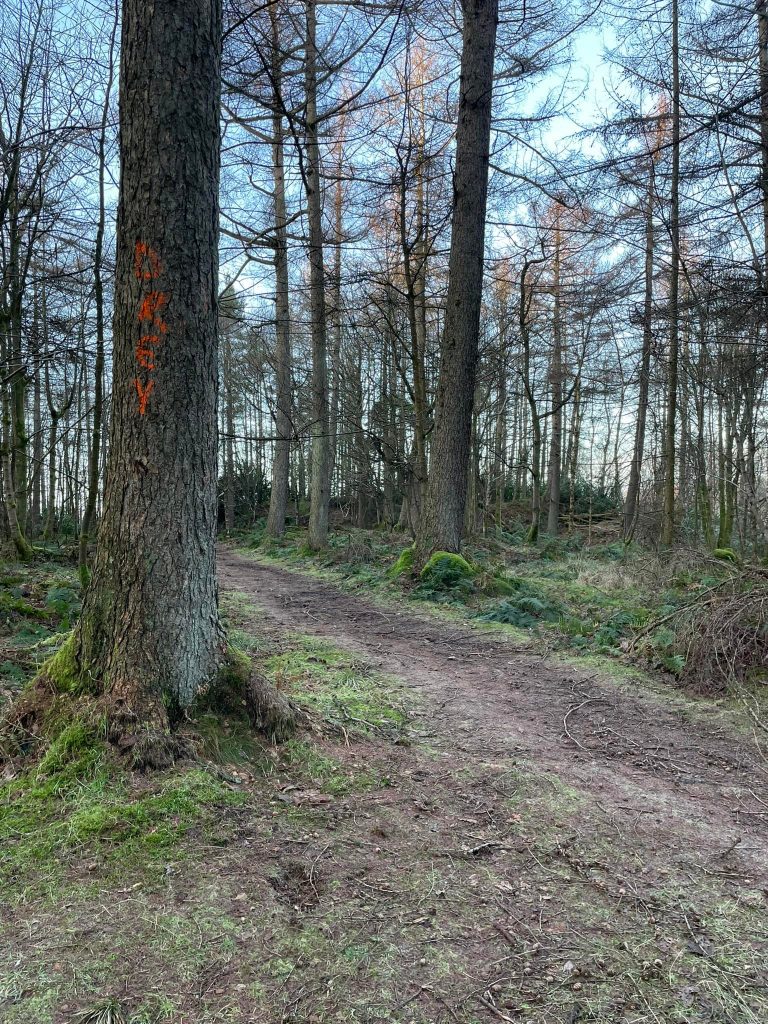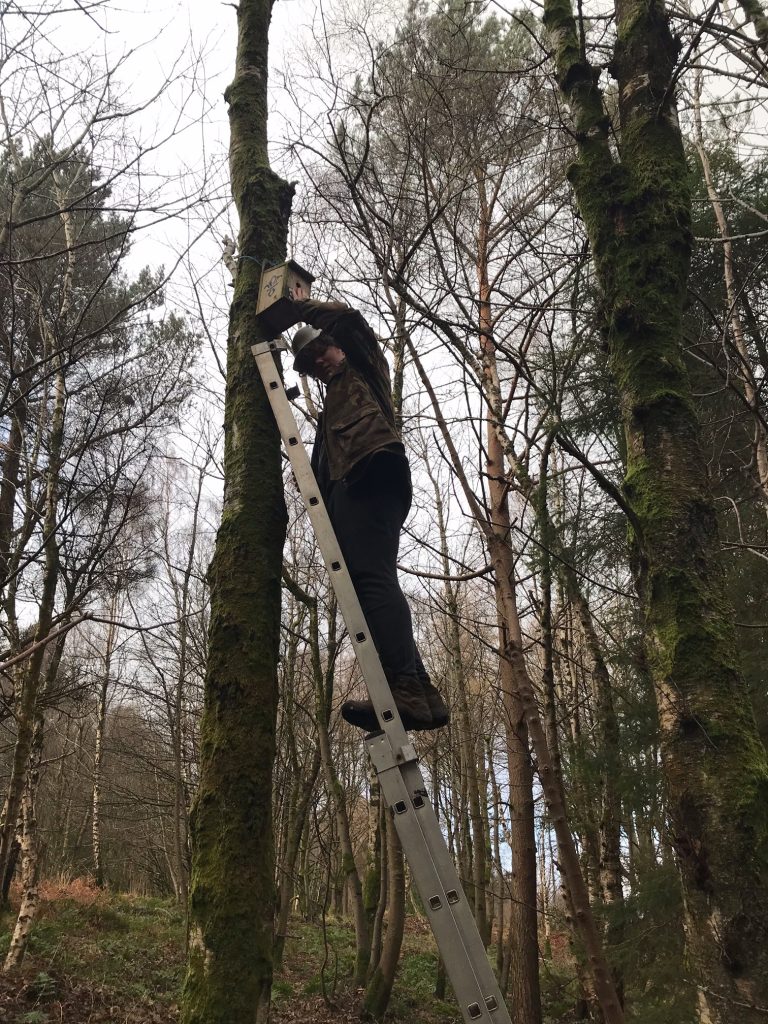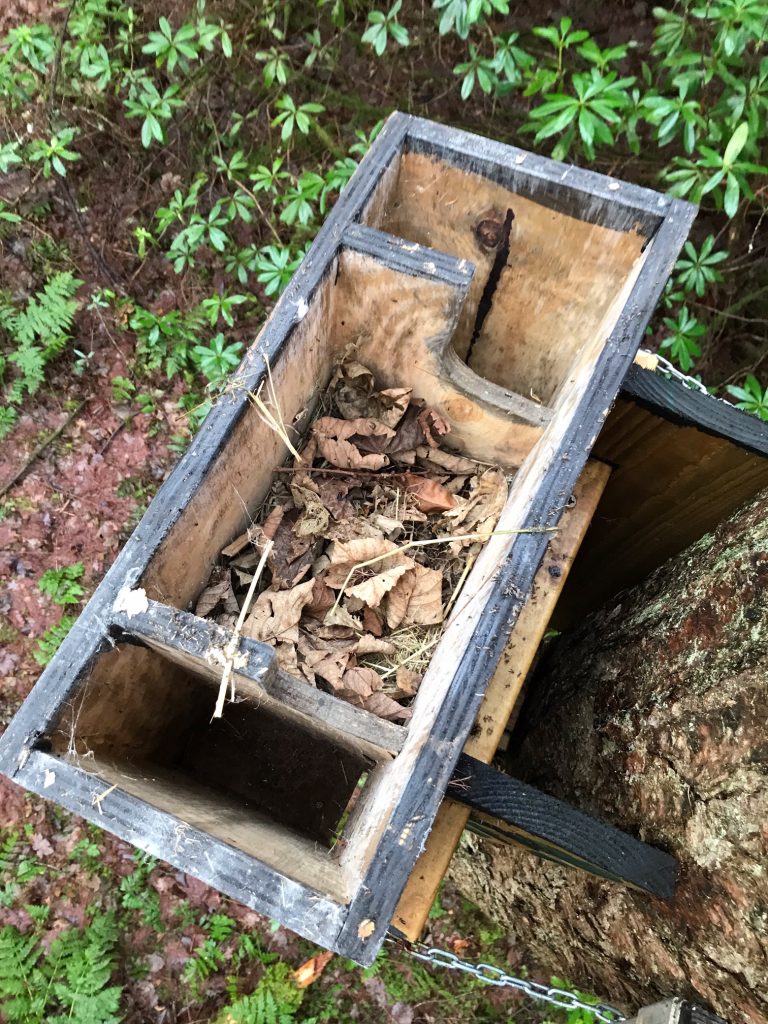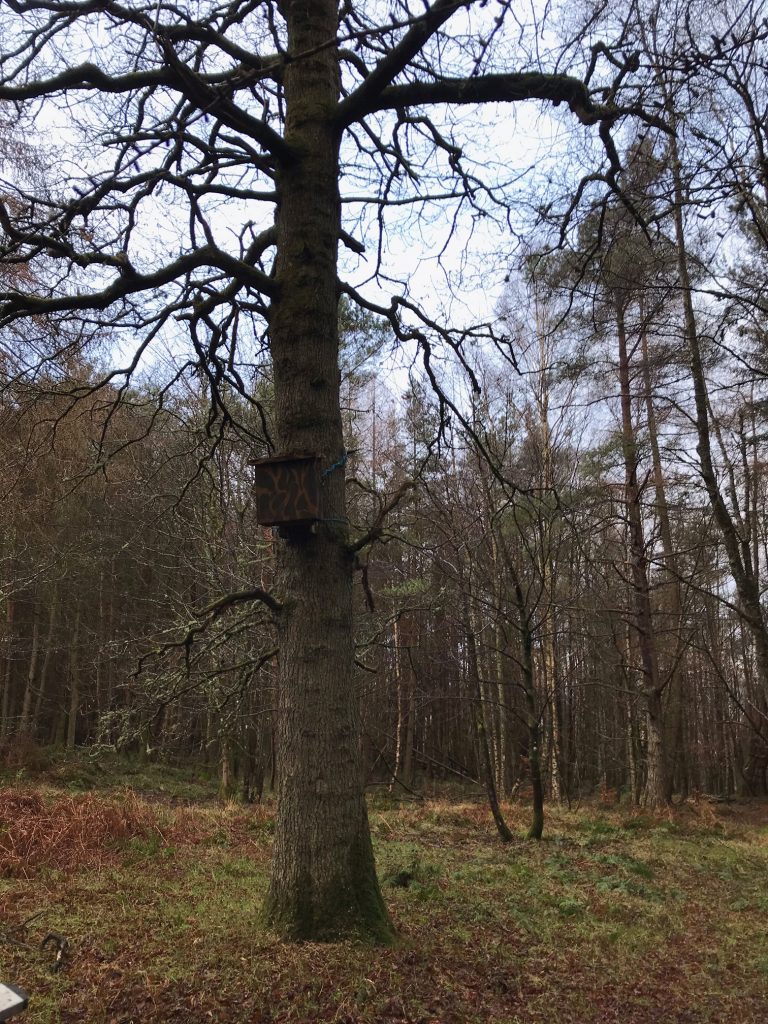Red Squirrels
Red squirrels are a big priority for us in the community woodland. With the help of regular volunteers Tom and Kay, we located and marked 49 squirrel dreys in the larch trees within the area to be felled. A drey is the name given to a squirrel’s nest. Although there is no certain way to tell a red squirrel drey from that of a grey squirrel, we used the precautionary principle and marked all that we spotted. It is very likely that a good number of those dreys might not be in active use, but again as we can’t be sure then we marked them anyway.

From Forest Research Guidance Note 33:
‘Red squirrels spend 70% of their time in the tree canopy, coming down to the ground only to find food or to cross open areas. Daily ranging activity can be between 0.2 and 1.8km depending on the food supply. When not feeding, red squirrels spend time in their dreys – resting, sleeping, sheltering, grooming and breeding. They do not hibernate in winter. Individuals may have several actively used dreys at any one time in its home range and can build a new drey in a few days’.
As it is an offense to destroy a squirrel drey, we will need a license from NatureScot, Scotland’s nature agency to fell those trees that contain them. The trees will then be left until the very end of harvesting work, this means no dozing squirrels should be given a fright.

Bird & Pine Martin Boxes
In preparation for 2022 nesting season and in light of upcoming works in larch areas, above Thornton and Forth Quarries, nesting boxes have been repositioned to other species of tree. Nest boxes 2, 3, 5, 6 & 7 have been repositioned.

Constructed in 2019 by 7th Stirling Scouts and put up in Spring 2020 nesting boxes numbered 1-17, which roughly mark the extent of Gillies Hill Community Woodland, have served two nesting seasons.
Observations in both seasons indicated busy use of nesting boxes by various birds. The maintenance visit confirms all boxes have been occupied (some with some surprising occupants).


Community volunteers Angus and Owain conducted this activity. Each box has been attached with girth rope to eliminate tree damage created by securing by screws or nails.

Blog written by Amos Higgins and Angus MacGregor
